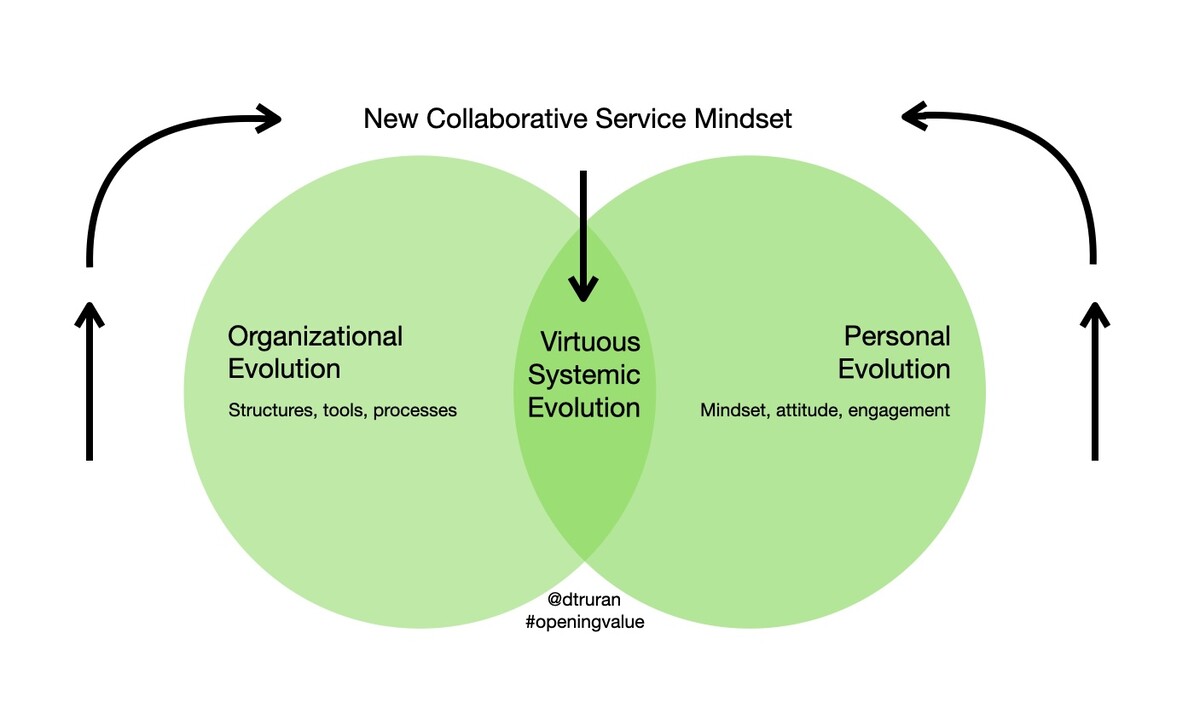
#FrancescaPick’s article of the new structures that are emerging and the way they work together sparked me to share some insights , of how you can (and really should) use those new organizational models in your own team.
(all wording in between “” commas is quoting Francesca’s article word by word)
I mentioned in this post Geoff Mulgan’s new organizational frameworks to work better together. https://dtruran.wordpress.com/2021/01/25/a-framework-to-accelerate-innovation/ What are more of the trends that are emerging and that will increasingly affect us all? What do we need to prepare for?
The time has come to “leave behind the organizing structures and cultures we have trapped ourselves in. It’s time we shift the tide and fundamentally change how we organize.”
“This isn’t work for the faint-hearted, and it’s not work we can do alone. But if we commit in the here and now to continuous practice with others, we can become greater than the sum of our parts.”
Already we are seeing this happening around us: the emergence of “organizational self-managing and teal organizations, networked communities, platform cooperatives, purpose-driven networks and movements” is evident around us, but how we can understand and harness these new dynamics is not so easy. How can we build the bridge between our reality and what is emerging around us?
The biggest obstacle to these systemic, necessary, useful approaches is that we rarely find a balance between the role of the individual and the role of the wider organizational shift. How can we then avoid losing the power, autonomy, protagonism of the individual in the bigger picture of the organizational evolution that the individual is part of?
Achieving that balance is the make or break for the best possible progress and outcomes to be achieved: if you leave out the individual the organizational process will inevitably fail due to lack of engagement, connection and ultimately resulting in the individuals losing interest and motivation to actually make things happen.
If you focus too much on the individual you, on the other hand, lose the fundamental energy of the whole, of the connected wider organizational evolution.
The challenge is to find the systemic-change sweet spot of engaging both the individual and the organizational evolution, without leaving out either of them and feeling comfortable with this dual, interconnected and reciprocally positive focus.
Two clear trends that Francesa highlights in her article are worth noting:
1. “Organizations are becoming more networked”
“Organizations are becoming more open, connected and less boundaried. Many are building platforms that create value by connecting their users, customers, suppliers, and partners. They are fostering the development of internal communities and cross-organizational networks.”
2. “Networks and communities are becoming more organized”
“There is a surge of networks all over the globe that are getting better at effectively mobilizing and making things happen in a highly responsive and dynamic way. Technological infrastructure and growing knowledge on self-organizing enable these groups to reach new levels of maturity and professionalization.”
“We see a huge opportunity in cross-pollinating learnings across these emerging models to help them mature and become viable alternatives to business-as-usual.”
“What they share is a tendency towards less top-down and more participatory dynamics.”
A full stack approach, a collaborative, connected approach
“To significantly change our organizational landscape, a “full stack” approach is needed: you work with all the elements in the organizational system, rather than tinker with individual parts.”
Just as importantly you never work in isolation, instead you are looking to develop dynamic, collaborative, group thinking and progress.
“To thrive in such environments, we need new skills sets: navigating complexity, collective leadership, facilitation, sense-making, process design, fostering relationships, listening and communication capacity, self-awareness, self-leadership and self-accountability.”
In summary: the new collaborative service-oriented mindset
The graph below offers the broad framework towards virtuous systemic change that I suggest would create the best possible outcomes for all.
There you can see how we need to evolve both the organizational and the personal spheres. We need to nourish and evolve both, in parallel, making sure they reinforce each other.
But only a new broad collaborative framework, with a clear service-oriented mindset will allow the profound connection that creates the ideal outcome of the virtuous systemic evolution that we and our organisations and our planet needs.


